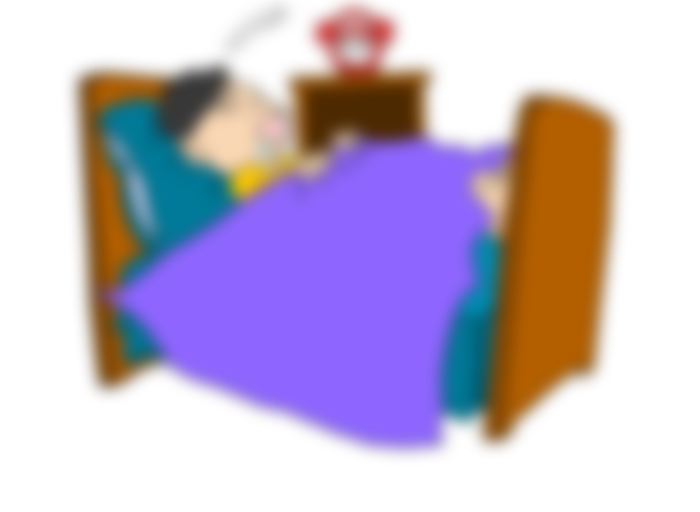Surely at a time in our lives we've held our breathe — maybe as a random test to see how long we could hold it or to escape perceiving foul smells. The cessation of breathing is generally termed Apnea (British-English spelling: Apnoea).
Literally, Apnea refers to the absence of breathing; however, it is widely defined as the temporary arrest of breathing and can be produced/initiated by will (obviously).
How long you can long your breathe is known as your Apnea Time. Basically, it ranges from 40 - 60 seconds in a normal individual. But some (or most) people are able to hold their breathe even longer.
CLASSIFICATION OF APNEA
Apnea is clinically classified into three (3) types:
Obstructive Apnea
Central Apnea
Mixed Apnea
1.) Obstructive Apnea
This type of Apnea may be easily understandable because of the word "obstructive". It is simply an apnea that occurs because of a blockage (obstruction) in the respiratory tract. It occurs predominantly due to excessive growth of tissues like tonsils.
Obstructive apnea is synonymous to Sleep Apnea, and is commonly described as such.

Sleep Apnea is the temporary arrest of breathing that occurs repeatedly during sleep, and it mostly affects overweight people. A distinct feature of Sleep Apnea is loud snoring; and as described above, it occurs mainly because of the obstruction of the respiratory tract (upper) by excess tissue growth in airway eg. large tissue or enlarged tonsils.
Snoring, if left unnoticed or ignored, may lead to some life-threatening occurrences like stroke, hypertension, heart failure etc.
2.) Central Apnea
This type of Apnea occurs due to disorders of the brain (mostly when the respiratory venters in the brain are damaged/affected).
It is typically a short pause in-between breathing and is seen in premature babies.
3.) Mixed Apnea
This is a type of apnea that occurs due to underdeveloped brain or respiratory system. It is a combination both Central and Obstructive apnea and is usually seen in premature babies & in infants.
CIRCUMSTANCES WHEN APNEA OCCURS
Voluntary effort.
Apnea after hyperventilation.
Deglutition apnea.
Adrenaline apnea.
1.) Voluntary Effort: Apnea can be induced by will, and this described as Voluntary Apnea or holding of breathe. The Apnea Time — How long you can long your breathe — can be increased by practice, consistent exercise and yoga.
As we need oxygen for life, prolonged voluntary apnea is dangerous and thus at the end of voluntary apnea (breaking point), the subject is forced to breathe. Apnea is always followed by Hyperventilation. Without the inflow of Oxygen, Carbon dioxide accumulates in blood which stimulates the respiratory centers resulting in the need for Oxygen. Asides from increased carbon dioxide content in blood, hypoxia and high hydrogen ion concentration (low pH) are also responsible for stimulation of respiratory centers.
2.) Apnea After Hyperventilation: During hyperventilation, more carbon dioxide is exhaled. Hence, partial pressure of carbon dioxide in the blood decreases and the number of stimuli to the respiratory centers also decreases, leading to apnea. During apnea, carbon dioxide accumulates in the blood.; when partial pressure of carbon dioxide increases, the respiratory centers are stimulated and respiration starts.
3.) Deglutition Apnea: Deglutition is the action of passing food or liquid down the oesophagus/gullet; the act of swallowing. The arrest of breathing during deglutition is known as swallowing apnea. It occurs by reflex during the pharyngeal phase of deglutition (2nd phase).
When food (bolus) is swallowed and pushed into the gullet from pharynx during pharyngeal phase of deglutition, there is possibility for the bolus to enter the respiratory passage through the larynx, causing serious health challenging scenarios like choking. This occurence is prevented by deglutition apnea, during which the backward movement of epiglottis closes the larynx.
4.) Adrenaline Apnea: Adrenaline apnea is the apnea that occurs after injection of adrenaline. Administration of adrenaline produces marked increase in arterial blood pressure. It stimulates the baroreceptors, which in turn inhibit the vasomotor center and the respiratory centers by reflex action, resulting in a fall in blood pressure and then apnea.
FURTHER READING: To read more on Apnea and find out detailed information, a good place to start is Wikipedia and some medical textbooks.



Sleep apnea is an involuntary cessation of breathing that occurs while the patient is asleep. The Greek word “apnea” literally means “without breath.” There are three types of sleep apnea: obstructive, central, and mixed. Of the three, obstructive sleep apnea, often called OSA for short, is the most common.